Pros & Cons of Plywood Floors Plus How to Choose Your Materials
Author: Omar Alonso | Editor: Omar Alonso
Review & Research: Jen Worst & Chris Miller
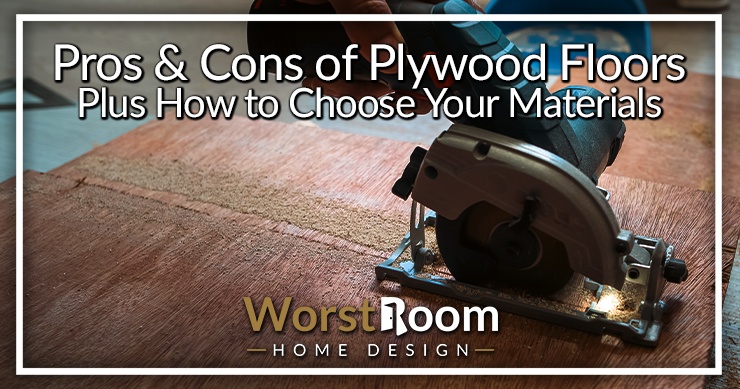
Are you in the midst of a home renovation and baffled about whether to use plywood for flooring or not? Given its cost-effective appeal, plywood floors are increasingly popular among some homeowners.
This insightful article will highlight the pros and cons of using plywood as a flooring material, helping you make an informed decision. Let's delve into the world of plywood flooring and explore its potential!
Pros & Cons of Plywood Floors
Can you use plywood for flooring? Here are the pros and cons of plywood flooring, no matter what types of plywood you decide to use;
Pros of Plywood Plank Flooring
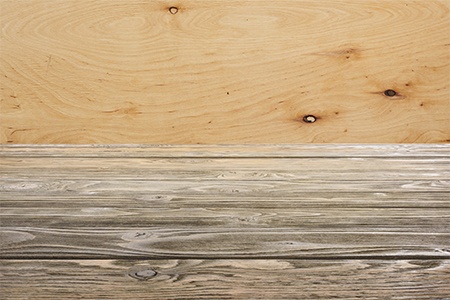
It is a particularly cost-effective solution with ample durability for everyday use. It can resist drastic climate changes and suit various house designs due to its versatility.
The upkeep required is minimal, permitting owners more leeway in maintenance routines.
Cost-Effective Alternative to Hardwood Flooring
Opting for plywood flooring offers a significant cost advantage over traditional hardwood. On average, plywood is about $100 less expensive than the most affordable hardwood option, making it a budget-friendly choice for homeowners.
Apart from being kinder to your wallet upfront, plywood floors lend themselves well to DIY installation. This aspect can lead to additional savings by eliminating labor expenses associated with professional floor-laying services.
Moreover, despite its lower cost, plywood plank flooring does not compromise durability or style appeal, providing an excellent alternative for those seeking economical yet attractive solutions in home design.
Its low-cost feature makes it appealing over more costly options such as solid hardwood and laminate flooring. Don't skimp out too much, like going for particle board subfloors, which has too many negatives to make sense.
Durable & Long-Lasting
Plywood flooring stands out for its durability and longevity, a key advantage over synthetic-based materials. It's designed to weather the everyday stress of foot traffic and household activities that could harm less sturdy options.
The strength of plywood floors is significantly enhanced with proper installation, ensuring they can serve many years without losing their quality or function. More so, any noticeable wear and tear on plywood plank flooring can be quickly addressed by sanding and refinishing it, providing a fresh look without total replacement.
Resistance to Extreme Climate Changes
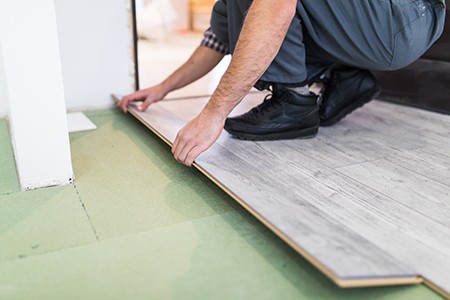
Plywood flooring has a remarkable ability to withstand extreme climate changes. Plywood can hold up exceptionally well if you live in a hot and humid environment or experience cold and dry winters.
Its multiple layers and cross-grain construction make it resistant to warping, swelling, and shrinking, which often occurs with solid hardwood floors. This means your plywood flooring will remain stable and structurally sound throughout the seasons, maintaining its integrity for years.
So whether you're dealing with scorching summers or freezing winters, you can trust plywood flooring to stand strong against the elements.
Versatile & Fitting With Various House Designs
Plywood flooring is a versatile option that seamlessly blends with various house designs. Whether your style is modern, rustic, or traditional, plywood floors can complement any aesthetic vision effortlessly.
Its ability to be stained and painted in different colors allows for endless design possibilities. Moreover, plywood's natural grain patterns add a touch of warmth and character to any room.
If you are aiming for a sleek contemporary feel or a cozy cottage vibe, plywood flooring can be customized to suit your unique taste and quickly adapt to the look and feel of your home.
Low Maintenance Requirements
Plywood floors are relatively easy to maintain, unlike traditional hardwood floors requiring regular sanding and refinishing.
With proper installation and sealing, plywood can withstand everyday wear and tear without losing its attractiveness. Additionally, plywood is more moisture-resistant than solid wood, so it doesn't swell or warp as easily when exposed to spills or fluctuating humidity levels.
This means you won't have to worry about frequent repairs or replacements due to water damage. Overall, opting for plywood flooring offers the convenience of minimal upkeep while still providing a durable and long-lasting solution for your home or office space.
Cons of Plywood as Flooring
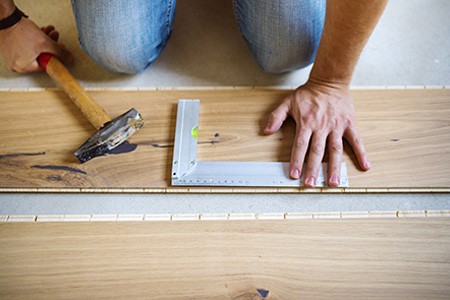
However, there are some downsides to using plywood flooring. Firstly, it may not have the same aesthetic appeal as hardwood flooring. While plywood can look nice with the right techniques, it may not have the same natural beauty and warmth as other wood types, like oak or maple.
Additionally, plywood is susceptible to water damage if not properly sealed, so it's important to ensure proper installation and maintenance. Lastly, compared to hardwood floors, plywood floors may require more frequent refinishing over time to maintain their appearance and durability.
Not as Aesthetically Pleasing as Hardwood Flooring
While practical and cost-effective, plywood flooring may not offer the same aesthetic appeal as hardwood flooring. While it can be painted to improve its appearance, it won't have the grandeur and natural beauty that premium hardwood floors provide.
However, plywood can still offer a charming and unique look if you're on a tight budget or looking for a more rustic or laid-back vibe. Remember that cracks, separations, cupping, crowning, and wood floor buckling are common issues with hardwood floors but may not occur with plywood flooring.
When considering your flooring options, weigh the benefits of affordability and versatility against your desire for a more visually stunning aesthetic.
Susceptible to Water Damage if Not Properly Sealed
While plywood has some natural resistance to moisture, it is still prone to swelling and warping if exposed to water over time.
This can lead to structural integrity issues and an unsightly appearance. To prevent water damage to plywood floors, ensure that they are thoroughly sealed with a high-quality sealant or finish that creates a protective barrier against moisture is crucial.
Regular maintenance and prompt clean-up of spills or leaks are also essential in preventing water-related problems with plywood flooring.
Using Plywood for Floors May Require More Frequent Refinishing
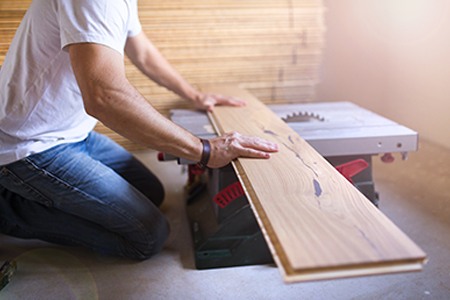
A potential drawback of using plywood for flooring is that it may require more frequent refinishing than other flooring types. Over time, the top layer of plywood can wear down or become scuffed, losing its original appearance, as compared to plywood alternatives.
This is especially true in high-traffic areas or homes with active children or pets. Refinishing may be necessary every few years to maintain the beauty and longevity of plywood floors.
While this extra maintenance can be inconvenient, consider the cost-effectiveness and versatility of plywood flooring as a trade-off for this potential downside.
Factors to Consider When Choosing Flooring Materials
These factors will help you decide whether plywood flooring is the right choice for your home.
Budget Constraints
Plywood flooring can be an excellent option if you're looking to save some money. Compared to hardwood flooring, plywood is a more cost-effective alternative that doesn't compromise durability or longevity.
Opting for plywood can achieve a stylish and functional floor without breaking the bank. This can be particularly beneficial if you have a large area to cover or are working with a tight budget.
If managing costs is a priority for you, plywood flooring is worth considering as it offers excellent value for your money.
Durability & Longevity
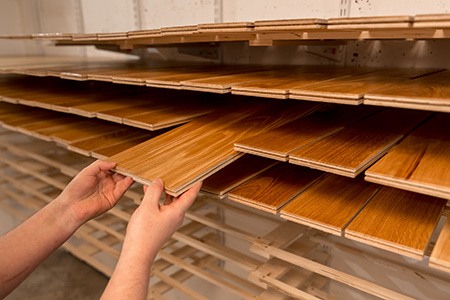
Plywood flooring offers durability and longevity, making it a popular choice for homeowners. While it may not be as durable as hardwood flooring, plywood is still more resilient than other options.
With proper maintenance and care, plywood floors can withstand everyday wear and tear, making them suitable for high-traffic areas in the home. It's important to note that some hardwood flooring may require additional finishing after purchase, while plywood can be used as a finished material right away.
This makes plywood an attractive option for those looking for a budget-friendly flooring solution without compromising quality and longevity.
Fitting With the House Design
Whether your home has a modern, rustic, or traditional aesthetic, plywood floors can be customized to suit your style.
You can choose from different types of plywood finishes and stains to match your house's color scheme and overall look. Additionally, plywood comes in various thicknesses, allowing you to create unique patterns or install it as wide planks for a more spacious feel.
With proper finishing techniques, such as sanding and sealing, plywood flooring can seamlessly blend with your interior design while providing a durable and cost-effective solution for your home.
Maintenance Requirements
Keeping up with maintenance is an essential aspect of any flooring choice, including plywood. While plywood floors require less maintenance than other flooring types, they still need regular care to ensure longevity and preserve their appearance.
Simple steps like sweeping or vacuuming regularly can help remove dirt and prevent scratches from accumulating on the surface. Additionally, wiping spills promptly and avoiding excess moisture can prevent water damage.
Periodically reseal the plywood floor to maintain its protective layer and enhance durability. These simple maintenance practices can keep your plywood floors looking beautiful for years.
Plywood Floors: Ugly But Durable!
Can you use plywood for flooring? Using plywood for flooring has its pros and cons. On the positive side, it offers a cost-effective alternative to hardwood flooring, durable enough to withstand heavy foot traffic.
It also adapts well to various house designs and requires minimal maintenance. However, there are some drawbacks. Plywood may not be as visually appealing as hardwood and is susceptible to water damage if improperly sealed.
Additionally, plywood floors may require more frequent refinishing than other flooring types. Ultimately, when considering using plywood for flooring, individuals should weigh their budget constraints, desired aesthetics, and long-term maintenance needs before deciding.



